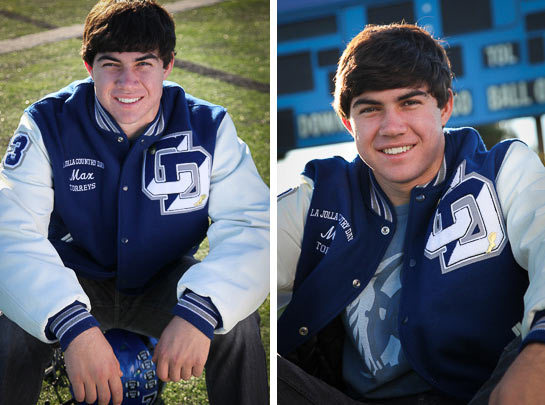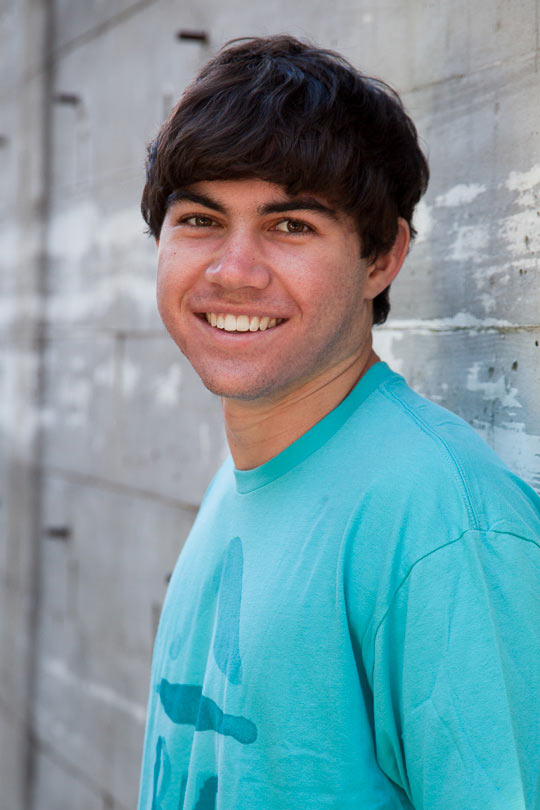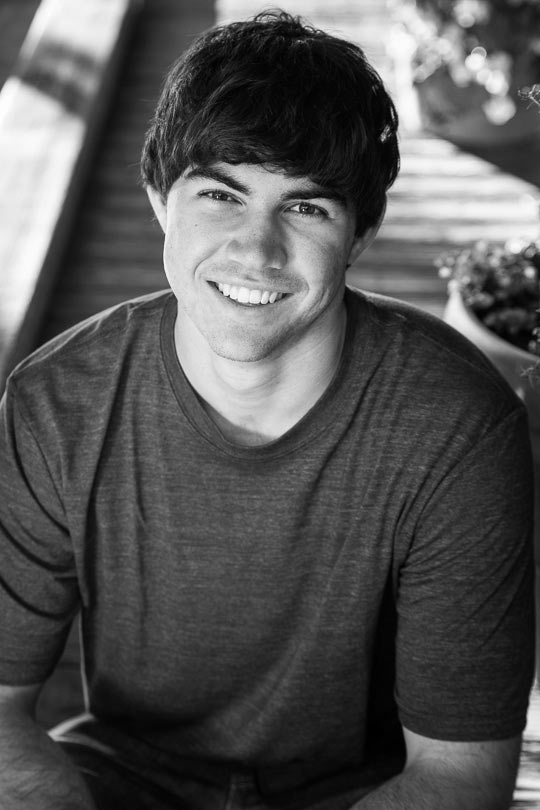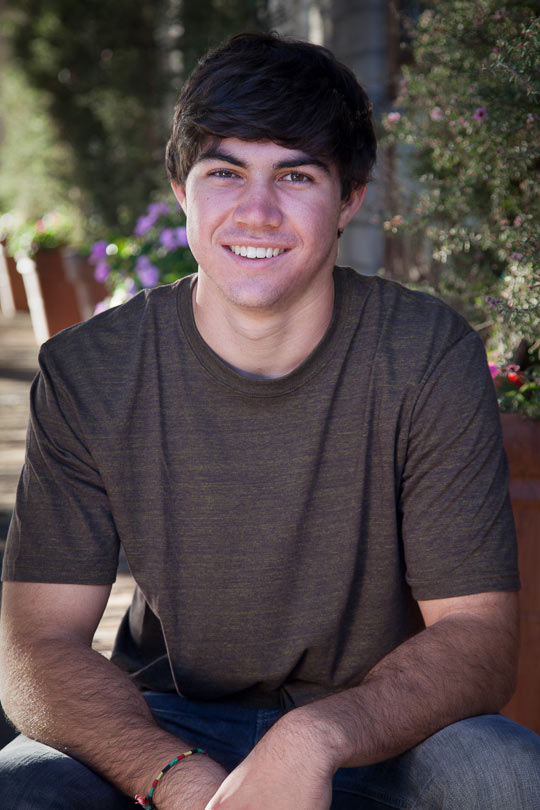We’re always learning as photographers, and sometimes the lesson we learn is not to ignore the lessons we’ve already learned.
I had one of those experiences this week.
I don’t know about things where you are, but here in the USA we suffer from an annual hysteria known as Senior Pictures.
The first time I heard this phrase I thought it meant taking pictures of old people.
Only much later did I learn that America has become obsessed with having professional photos taken of graduating high school seniors.
This trend has spun completely out of control, with some parents paying astronomical prices to high-fashion photographers to give their kid the glamour-magazine look. To me, it often seems like a sad arms-race among rich parents to see who can make their daughter look the most like a slutty pop star.
Now, I typically avoid anything even remotely like this in photography, for the same reason that I don’t shoot weddings. Too many family members involved. Deadlines. Crazed parents. Too much stress.
I prefer shooting portraits where the client is my subject, one-on-one. With no “inspired” third-parties trying to direct me. Only one person to please. And if for some reason we don’t like the results, we can always try again. No deadline, no pressure.
Nevertheless, when I was recently asked to shoot some senior pictures for a family friend, I happily said yes. After all, Max is a great kid who I’ve known for many years. And being the photographer in the family, I was happy to help out, as a graduation gift.
My mistake was in forgetting to follow my own rules for photo shoots.
You see, for senior pictures, parents come up with IDEAS. For the first photo shoot, I let a parent choose the location, the time of day, the clothing, even some of the poses. My first mistake was in handing over that much control.
My second mistake was in failing to put the same amount of preparation into this non-paying, low-key family job that I would into a job for a paying client.
Normally I would never shoot in a location that I had not scouted and test-shot in advance, at exactly the right time of day, to know how the light would behave.
But since this was a little family freebie job, I thought, Oh well, I’ll just show up and work with whatever conditions exist. There’s always a way to make it work, right?
My third mistake was not really my mistake at all. It was a mistake on the part of a well-intentioned parent who showed up, unexpectedly, at the shoot to “help.” Surprise! If you want to guarantee an uncomfortable teenager, just bring a hovering parent into a photo shoot.
So here I am on the day of the shoot, standing on the 50-yard line of a football field in the blinding sun, wondering how the heck I let myself get talked into all this. And wondering how I can politely re-take control of the situation and get a few decent shots in a location that I never would have chosen at this time of day.
The light was impossible. The poses were awkward. Max, to his credit, was a great sport throughout, but how relaxed can a kid be with a mother directing him one way and a photographer directing him another?

Struggling with the light. Struggling with the pose. Neither the subject nor the photographer are very happy at this point. My best idea of the day was the shot on the right with the scoreboard, but the pose is still a bit awkward. Lighting: Sunlight plus white reflector.
Out of 376 shots on that long, hot afternoon, I got only four or five that could be called keepers. I consider that a failed photo shoot.
So Max and I decided to try again, a week later. This time on my terms. Just me, Max, and my assistant to hold a reflector. And on my turf. I had Max come to my neighborhood where I know the light.
We had already done the jock thing with the football helmet and letter jacket, so now I felt free to get the portraits that I wanted. The real Max.
He’s a sweet, funny kid, and I wanted to capture his relaxed side. He’s a jeans-and-T-shirt kind of guy, so I just let him wear the clothes he’s comfortable in. (I had parental permission on that).

Shoot 2: We started on my balcony, using two Speedlites from camera right as the main light and the afternoon sun as a rim light. Not bad, but it looks a bit “lit” and I think we can do better.
After a few shots on my balcony, I decided to take Max down into some alleys near my building, where I knew the light would be good a this time of day.
(By the way, all the photos here used exactly the same lighting techniques I cover in my portrait photography course.)

Now we’re getting somewhere. Better background, better light, more relaxed subject. Lighting: Open shade plus silver/gold reflector. The seated shot at the top of this page came from the same location with the same light, just a different angle.
This second shoot was everything the first was not: fun, relaxed, and productive. We got so many good shots that we’re struggling to narrow the keepers down to a few dozen.
So what lessons can we learn (or re-learn) from this experience?
1. Scout Your Location in Advance — I already know this rule, of course, but I simply didn’t follow it this time. I let someone else choose a time and place, and I showed up. If this had been a paying client I would have gone out there the day before and done test shots with my assistant as the subject. Or at the very least I would have looked over the location and mentally set up the shots that I thought would work.
2. No Parents or Other “Co-Directors” Allowed — I know, I know, this rule is very hard to enforce if you shoot weddings. But that’s one of the reasons I don’t shoot weddings.
If at all possible, keep parents, boyfriends, girlfriends, managers, and any other well-intentioned third parties out of the shoot if you want to get a relaxed and comfortable rapport with your subject. The time to take suggestions and directions is in advance. During the actual shoot, there can only be one director, and that’s you.
3. Shoot Your Vision, Not Someone Else’s — This can be difficult, because your subjects (or their parents) often have a particular shot in mind. And that’s fine, sometimes even helpful.
But it’s one thing to be given a broad direction like, “We want a shot of Max with his football helmet and jacket” and it’s quite another thing to hear, “And we want that shot in this location, with this background, at this time of day.” Now you’re pinned down, possibly in conditions that just won’t work for you.
Have you ever tried to write a story based on someone else’s idea, or create a painting or drawing in an art class, based on an assignment that just doesn’t interest you? Then you know the fact that to create any kind of successful art, you have to create from a vision that you see clearly in your own mind. Not someone else’s vision.
And once you have gained some experience as a photographer, you start to get very good at picturing in your mind how you want a certain shot to look, and how you’ll create that look.
You see it that way, because you know what works and what you’re capable of. No one else can substitute for that judgment, and if they try to override your judgment, the results can be ugly.
Stand up for your vision.

My favorite shot from these sessions. Open shade with partial sun back-light and silver/gold reflector.
So, in the end, while I learned nothing from this experience that I didn’t already know—I was strongly reminded to actually follow the rules that I already know.
And that’s a useful lesson, too. Apparently a lesson that I occasionally need to have re-drilled into my thick head.
May my mistakes help spare you from similar ones.
Equipment used in these photos:
Lastolite TriFlip Reflector (silver/gold aka Sunlite cover used here)
Westcott 5-in-1 Reflector (white side used)
Canon 580EX II Speedlite
Canon 5D Mark II
Canon EF 24-105mm f/4 L IS USM Lens




Hi Phil. I am one of your online students so really appreciated this. I like your straightforward comments and style. In a recent post, you said you like to do sports photos. Is there somewhere I can look at some of them? Thanks/Butch
You are on the money with this one. Shooting for a family member and not a paying client. Follow the rules no matter who the subject is. I don’t know if they would like to do it over. I guess one can ask. They are engaged and will be getting married next year. Would liked to have done a better job.
Hey Phil,
Thanks for the very informative tutorial and reminders. I think at one time or another we’ve all been there. I recently did a portrait shoot for a friend’s teenage daughter and was concerned as “Mom” was there although I turned out to be pleasantly surprised as it wasn’t an issue. In fact, this one rare time “Mom” helped by joking around with her daughter, kept her laughing which seemed to relax her. Luckily for me the daughter was a bit of a natural, loved the camera and seemed to be able to figure out the poses without much instruction.
Reading your experiences here made think back about my shoot and how it could have went sideways in hurry if Mom and daughter didn’t work out as well as they did. It made think about how I would have done things differently should it have been necessary. I appreciate how your tutorials provoke a deeper thought process which in my case certainly prompts me to evaluate more thoroughly prior to setting out for a shoot or pressing the shutter button.
I also recently purchased your Lightroom Made Easy video tutorials which have been the best value for my photography dollars by far. Excellent series and I’ve learned so much for which I’m grateful to you for. Well done……high fives!
Cheers
Hi
Great read! I try to approach paying/non-paying jobs with the same approach and ethic – to do the absolute best work for the client. Sometimes it is impossible to scout the area in advance, so one has to take control of what you can, like time of day and the shoot itself.
Sometimes it works to ask the client to browse Pinterest or other sites for concepts, print and bring along (or email in advance) the images they gravitate towards.
Thanks Phil, that was very insightful. Sometimes the hardest thing to do is critique my own work, especially if I have been put on the spot to deal with whatever conditions I find. We travel a lot so that’s mostly what I have to do while I wish I could set up an organized shoot.
The more I learn about it the more equipment I carry around too. Thanks for your speedlight tutorial, it’s extremely helpful.
Phill, this is great advice. It can seem obvious, bus as you say, one sometimes forgets it. I am also an online student and have learned a lot from you.
Having only one director is a struggle I sometimes face in fashion shoots, when Make-up artist and stylist also contribute to the creative process. Their input is most important, but the models need to know who to take directions from, or they’ll be all over the place.
All the best!
Nice blog post. It’s interesting to see that even professional photographers sometimes have to relearn or be reminded of lessons learned.
When will you be releasing your Event Photography tutorial? I’ve been looking forward to it a long time.
Good advice, as always, Phil. It’s always nice to be reminded of basic rules. Thanks….
Thanks for the information. Doing a Christmas card photo for a friend and you reminded me of things I wasn’t taking into account.
Good information,Phil!
Max looks like the son on the TV show The Good Wife” on CBS-TV on Sunday nights.
I recently photographed a high school senior and his mom was with him. I picked the location and time. Luckily Mom was used to acting and worked with the son to relax and made him laugh a lot. Both really enjoyed the photos I made that they helped with.
I disagree with not allowing mothers on the scene. This is especially true with dealing with underage subjects. You need to learn how to “use” the mother on the shoot. Give her something to do. I give them the job of watching the hair. A strand falls out of place, they need to step in to fix it. Sure, they may step in more than needed, but their attention is glued to the hair. That’s THEIR responsibility. Don’t complain about the hair in the final proofs. Talk to Mom – that was her job. Let that be known at the shoot, and Mom will watch those stray hairs like a hawk. What Moms can do is touch the model, something that the photographer has to be careful about, especially with underage girls. An innocent touch can be seen as inappropriate. If you are letting Mom give directions opposite to your instructions, you do not know how to take command of the situation. People Skills 101.
Hi Phil, Had the same thing happen Sunday with a family of 6, first time for me with this many. Mom took charge pretty quick and I let her. Some ideas were fine but finally starting shooting the kids between set ups and as usual the shots were much better. I have sure learned a lot from you videos and lessons. Thanks
Thanks again Phil for those very important reminders when doing a shoot. I too have decided to stay away from shooting weddings. Nowadays everybody with anything that resembles a camera will find a way of getting into your shot. Give me a portrait job anytime—whether a paying client, or a trade shoot—peace of mind is good for the soul.
I find all your tutorials and articles very helpful. Keep on keepin’ on!
Good one Totally agree, just done some competition shots using a prof .Artist he helped by doing what I asked and suggested a hand movement that made the shot so much better and also made the shot live. Regards Les from South Australia
Great info to remember. Can you tell me how far you were from your subject?
Judy, about 6 feet. Zoomed all the way in with 104mm lens.
I agree totally. I mostly photograph families, kids and young adults and if the parents want to say how it’s done – I hussle them away from the sitting and assure them that I know what I am doing and that’s what they are paying me for.
If the portraits are of anyone over about 10 (and it’s not a whole family shot) I always get the parents out of the way.
You are right Phil about the lessons you learned from that shoot, in the past when shooting friends. They have directed what shots they wanted and i didnt want to make a big issue out of it or appear uncooperative. i learnt the hard way.
Now i say in advance i will do this this and this, i dont want to be directed ,leave it to me thats my area of concern, family members can best help by cooperating with instructions.
It has taken a lot of the stress off me as they know what i want to do and i am not worrying afterwards thinking i should not have taken that shot etc.
Keep up the good work
Joe
A very useful interesting article. Sound advice. Many thanks for sharing…..!
Mark…
Good advice. I prefer including the hands in a portrait.
You may not know me but let me tell you. I read your blog and I is soo helpful that. You are able kindly and generously share your expirience and how and where and why’s. You know its hard to find someone to actually tell you the things you want to know in a honest way. I wanna thank you for writing your blogs to help another person whether you are a begginer like myself or a professional. … some people don’t like to share their ideas and milesciously tell people lies and don’t wanna help so therefore I Thank you once again! 🙂
Thanks Phil,for the brilliant pieces of advice.
I was in a similar situation and couldn’t figure out,( until now )why the teenagers were not relaxed.Although,I wasn’t pleased with the results,mum liked them.
It is comforting to know that we all do these mistakes and unless we openly talk about them,we may take a long time to improve.
Thanks once again.
Thanks Phil, That is very helpful.
Take care, Geoff.
As a photographer & mom of a High School Senior, I have to both be the photographer AND the mom, a task I’m having issues with because my son sees me as the mom and not the photographer. I beat that issue by having his long-time girlfriend join in and he tends to cooperate (and look a lot more cheerful about being photographed) when she’s just off-camera helping with reflectors or just being something for him to focus on besides his pose, etc.
I very much like your comments about the whole photo shoot. And I like the final portraits but not the background. In my opinion it is too much in focus and draw too much attention away from your good subject. What focal length did you work with, or is it me being too critical??
Thanks for a great blog.
Hi Phil,
Thanks for putting yourself out there and letting the rest of us learn from it. It’s inspirational. And Publius, nice post. I learnt just as much from that 🙂
What I liked the most in this post was that you openly talked about issues that went wrong in a way that I don’t usually see coming from professional photographers (in a good way). I think many of us are afraid to admit our own faults, but you came with an enlightening and constructive approach what will for sure help a lot of people reading it.
Keep up the good work, it adds a lot to your credibility.
Excellent article for many reasons. I like how you explained the right way to accept direction from friends/family–ahead of time. You did wind up getting some great pictures!
Hey Phil, Thanks a bunch for this. I am soaking in all the advice I can. I have enjoyed your lighting tutorials and find your advice articles really helpful.
Thanks for the great post, Phil. This topic is important for a few reasons: #1 because it’s nice for professionals to know that everyone in a creative line of work has faced similar issues at some point, and #2 because it’s important to remember to always stay true to one’s values and ideals. The genuine smiles on the (final) finished portraits say everything!
Great article. Thanks.
Appreciate all your insights! You’re right that it’s hard to manage expectations with too many variables. The trick, as you say, is how to politely ask parents to leave you and the senior to the work at hand. One note, I typically don’t work with an assistant, soooooo, being left alone with a senior (i.e. female….) presents potential problems of its own. In those cases, I usually put mom to work holding something and I try to have that be a reflector (usually in front of her face…) 😉
Excellent Post! Enjoyed the information and transparency…Thank you!